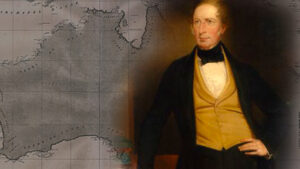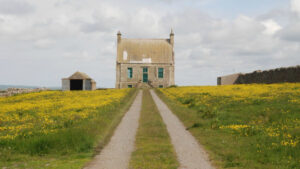The Second World War had begun, and P.G. Downes was none the wiser. He was too enraptured by the task at hand — exploring Canada’s North. This American schoolteacher and writer left it all behind to delve into the Great Barren Lands and its indigenous people.
As a name, Prentice G. Downes sounds a bit stuffy and old-fashioned, but the man was anything but. His portraits make him look like a cross between a rakish character and a matinee actor. Known as Spike to his friends, he was born in Connecticut in the early 1900s. From an early age, he showed high intelligence and an incredible awareness about how the world and people worked.
He studied psychology at Harvard but accepted a teaching position at a high school afterward. He taught languages (English, French, and Latin) but was adept at many subjects, including history and geography. His own hobbies included studying rocks, learning about new cultures, drawing maps, and naturally, exploring the outdoors.
He had a curious personality, was a tad dramatic, and carefree. Sometimes, delays during his wilderness trips made him late for his teaching commitments. However, his enthusiasm for imparting knowledge delighted his colleagues, who noted that he had “an absence of egotism.”

A scurrilous-looking P.G. Downes, at home in the north. Photo: Downes Collection/Facebook
Lakes, rocks, rivers, and tundra
In the end, however, the classroom could not contain his restless body and curious mind. He decided to turn his love of languages and hobbies into an actual life’s work. He yearned to explore more of Canada’s northern regions, especially the Barren Grounds, an arctic region west of Hudson Bay. It features an abundance of lakes, many long, technical rivers, a quadrillion rocks, and tundra as far as the eye can see.
Downes compiled his observations into four diaries, which included notes, illustrations, sketches, and maps. He wrote about anything he saw, from his mental state to vivid details of grueling portages. He even pressed dead mosquitoes into his journal.
His expeditions corrected mistakes made by earlier mapmakers and incorrect assumptions about cultures made by anthropologists. He had an affinity for studying local traditions, folklore, and supernatural legends of indigenous groups like the Cree and the Dene. He greatly admired them and tried to put himself in their shoes in order to travel their land successfully.

P.G. Downes in his canoe. Photo: Downes Collection/Palatten.net
The man who talks about dreams
Downes was so fascinated by their views on dreams that they nicknamed him, “the man who talks about dreams.” He wrote extensively on Cree dream interpretation, but these writings were not published. He also attempted to create a Cree dictionary. However, his greatest achievement was a compelling narrative called Sleeping Island, published in 1943 and today considered a minor classic.
He was inspired by the writings of Napoleon-Alexandre Comeau, a 19th-century Canadian naturalist who focused on the wonders of this region. Another important influence was explorer George Douglas, who likewise canoed much of the Barren Lands area and was one of the first to do so.
He started traveling north in 1935. Though he loved the Barren Grounds, he even went east to the Quebec North Shore to learn about the Montagnais and Naskapi, today collectively called the Innu. Then in 1936, he traveled from Montreal to Churchill and eventually canoed to Reindeer Lake with a native guide.
In 1937, Downes received sponsorship for an expedition even further north, to the Boothia Peninsula, the northernmost land on the Canadian mainland. In 1938, he canoed from the end of the railway in northern Alberta to Great Slave Lake. His expertise and growing reputation opened opportunities to work in an official capacity. For example, the U.S. government hired him to create maps of Alaska.
The great expedition
In 1939, he embarked on a great expedition to Nueltin Lake, also called Sleeping Island Lake, which inspired the title of his best-known work. Reaching Nueltin Lake required much skill and care due to its challenging whitewater, its bogs, and its mosquitoes — the most abundant in the North, according to naturalist Ernest Thompson Seton. Seton devised an informal “mosquito gauge,” removing his glove for five seconds and counting the mosquitoes that settled on his hand in that time. In that part of the Barren Grounds, he counted 175, a number that dwarfed everywhere else.
Downes returned home to discover that the world was now at war. Wistfully, he wondered if he would ever see these untouched, unspoiled regions again. He was grateful to have seen it “just as the old north was vanishing; the north of no time, of game, of Indians, Eskimos, of unlimited space, and freedom…”
Downes died in 1959, at age 50.






